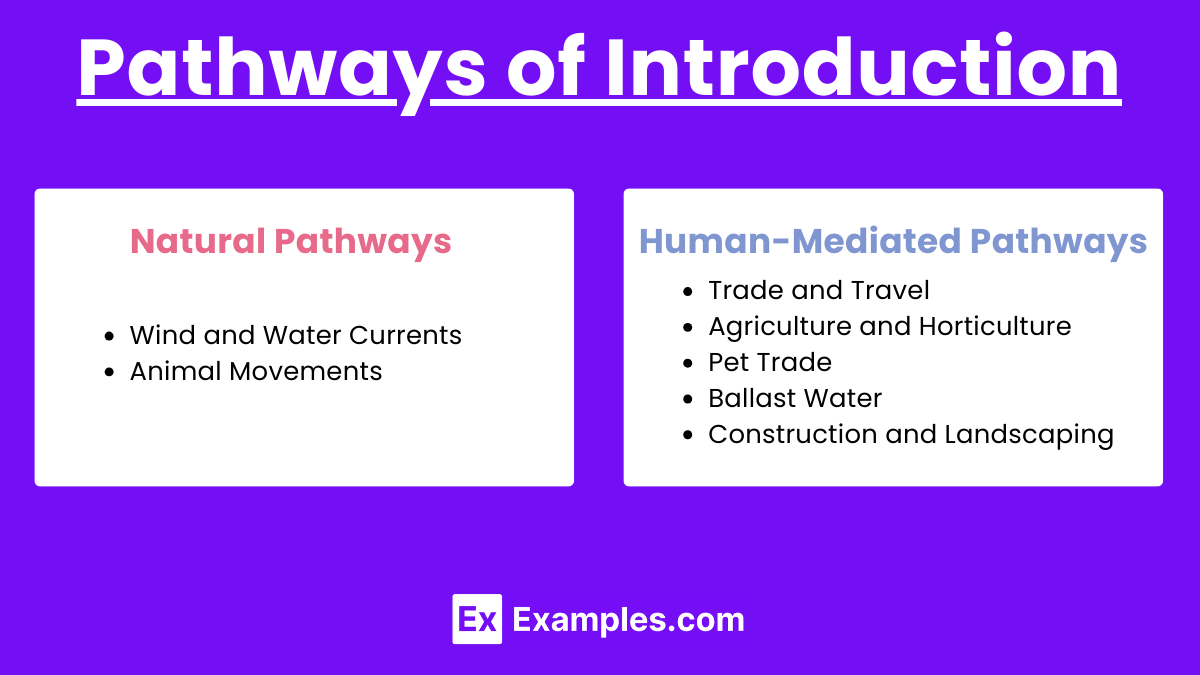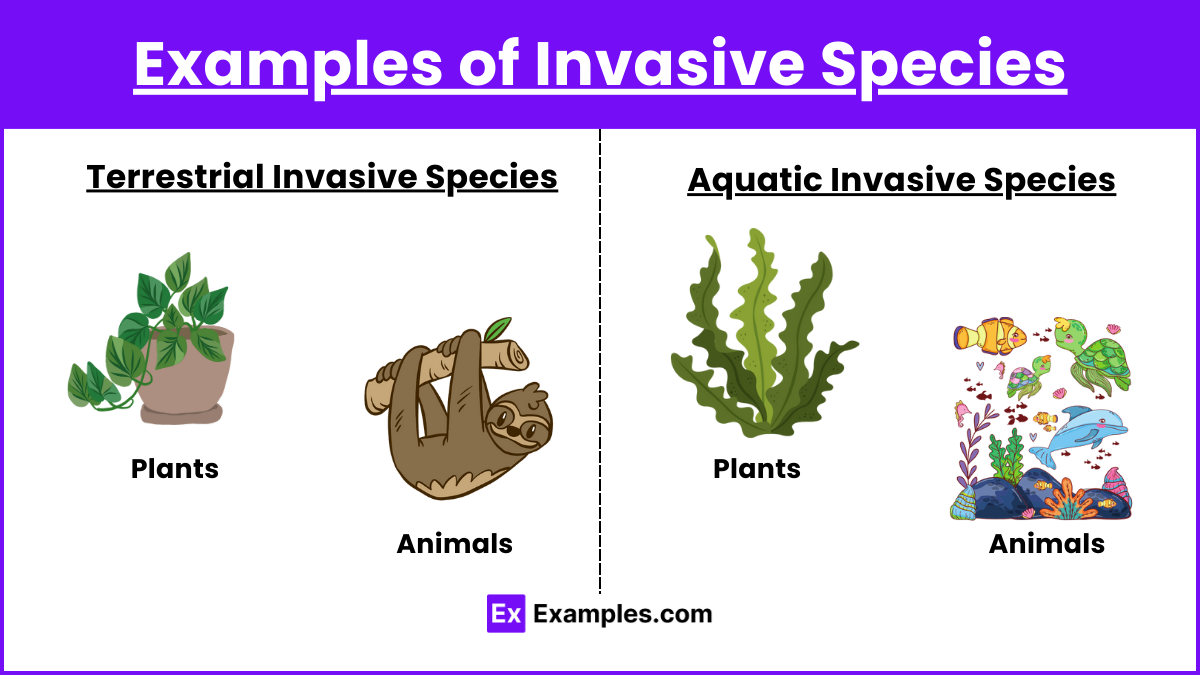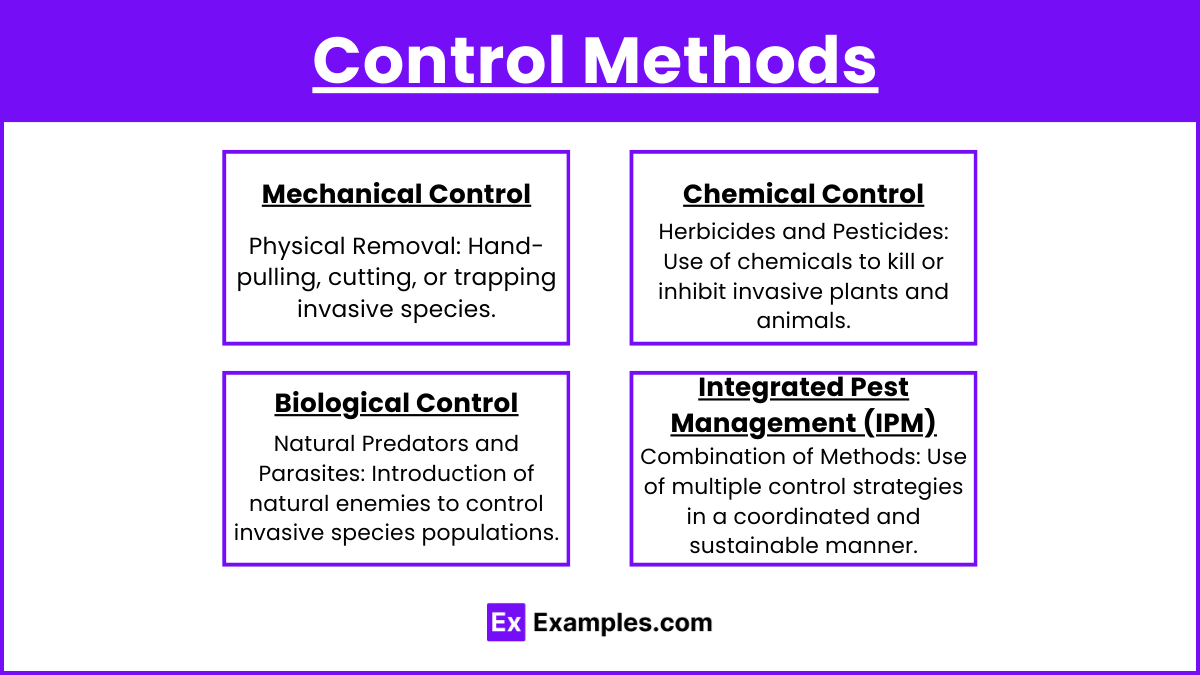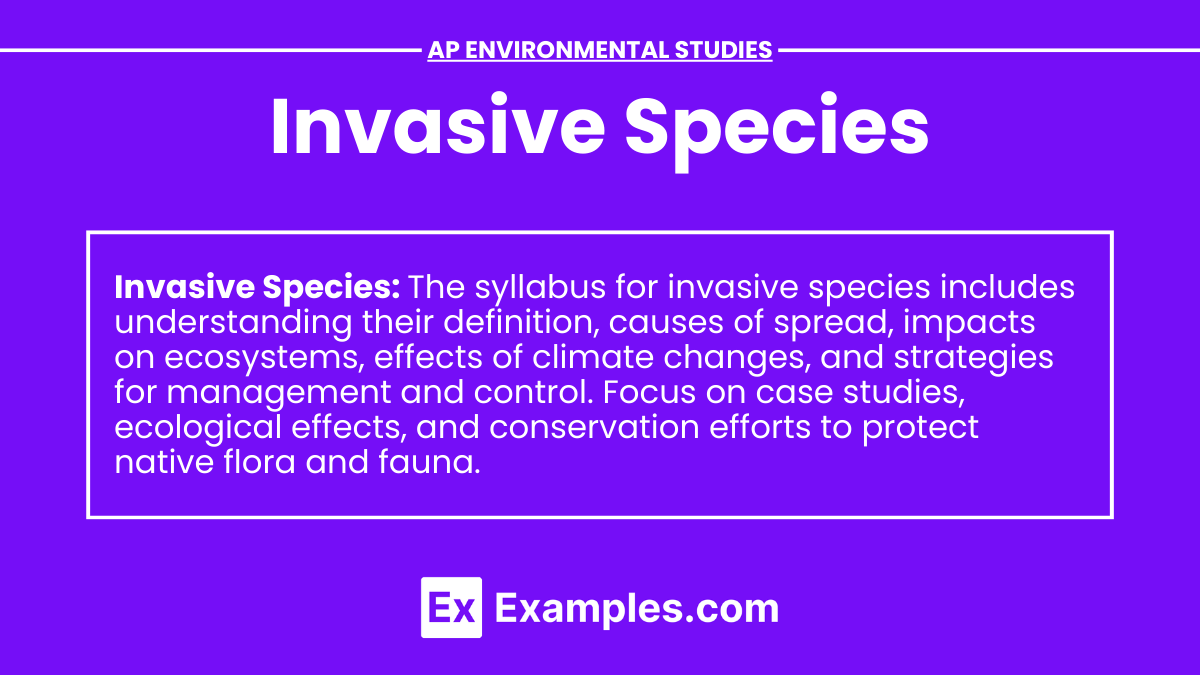Invasive species are non-native organisms that disrupt ecosystems and threaten biodiversity by outcompeting, preying on, or altering habitats. Their introduction, often through human activities, has significant impacts on ecology and the balance of the biosphere., affecting both local and global environments. Understanding the role of invasive species is crucial in AP Environmental Science, as their presence highlights the interconnectedness and vulnerability of ecosystems within our biosphere.
Learning Objectives
By studying invasive species, students will understand how non-native organisms impact flora and fauna in ecosystems. They will learn the causes and consequences of invasions, including how climate changes can facilitate the spread of these species. Students will analyze the ecological and economic effects of invasive species and explore management strategies. This knowledge will underscore the importance of protecting native flora and fauna and mitigating the impacts of climate changes on biodiversity.
Characteristics of Invasive Species
Definition
- Invasive Species: Non-native species that spread rapidly and cause harm to native species, ecosystems, human health, or the economy.
Traits of Invasive Species
- Rapid Reproduction: High reproductive rates and short generation times.
- Broad Diet: Generalist feeders that can exploit a variety of food sources.
- High Dispersal Ability: Capable of spreading quickly across large areas.
- Tolerance to Various Conditions: Ability to survive in a wide range of environmental conditions.
- Lack of Natural Predators: Absence of natural enemies in the new environment.
Pathways of Introduction

Natural Pathways
- Wind and Water Currents: Seeds and larvae can be transported by wind or water to new locations.
- Animal Movements: Birds and other animals can carry seeds and organisms to new areas.
Human-Mediated Pathways
- Trade and Travel: International trade, shipping, and tourism can unintentionally introduce species.
- Agriculture and Horticulture: Importation of plants and soil can bring in non-native species.
- Pet Trade: Release or escape of exotic pets into the wild.
- Ballast Water: Ships’ ballast water can transport aquatic organisms across oceans.
- Construction and Landscaping: Movement of soil and materials during construction projects.
Examples of Invasive Species

Terrestrial Invasive Species
Plants
- Kudzu (Pueraria montana): Native to Asia, it grows rapidly and smothers native vegetation in the southeastern United States.
- Purple Loosestrife (Lythrum salicaria): Invades wetlands and displaces native plants, affecting waterfowl habitats.
Animals
- European Starling (Sturnus vulgaris): Competes with native birds for nesting sites and food.
- Feral Pigs (Sus scrofa): Root up vegetation, causing soil erosion and habitat destruction.
Aquatic Invasive Species
Plants
- Water Hyacinth (Eichhornia crassipes): Forms dense mats on water surfaces, blocking sunlight and oxygen, harming aquatic life.
- Hydrilla (Hydrilla verticillata): Grows aggressively in water bodies, clogging waterways and outcompeting native plants.
Animals
- Zebra Mussel (Dreissena polymorpha): Clogs water intake pipes, damages infrastructure, and outcompetes native mollusks.
- Lionfish (Pterois volitans): Predates on native fish and disrupts reef ecosystems in the Atlantic Ocean.
Ecological and Economic Impacts

Ecological Impacts
- Biodiversity Loss: Invasive species outcompete, prey on, or introduce diseases to native species, leading to declines or extinctions.
- Habitat Alteration: Changes in physical environment, such as soil composition, water flow, and light availability.
- Food Web Disruption: Alteration of trophic interactions and energy flow within ecosystems.
Economic Impacts
- Agricultural Damage: Invasive pests and weeds reduce crop yields and increase management costs.
- Infrastructure Damage: Clogging of water systems, damage to buildings, and increased maintenance costs.
- Management Costs: Significant resources required for control, eradication, and restoration efforts.
Human Health Impacts
- Disease Transmission: Some invasive species are vectors for diseases affecting humans and livestock.
- Allergies and Toxins: Invasive plants can cause allergies or be toxic to humans and animals.
Management and Control Strategies
Prevention
- Biosecurity Measures: Strict regulations on the importation and transport of potentially invasive species.
- Public Awareness: Education campaigns to inform the public about the risks of invasive species.
- Early Detection and Rapid Response: Monitoring programs to quickly identify and address new invasions.
Control Methods

Mechanical Control
- Physical Removal: Hand-pulling, cutting, or trapping invasive species.
- Barriers: Installing physical barriers to prevent the spread of invasive species.
Chemical Control
- Herbicides and Pesticides: Use of chemicals to kill or inhibit invasive plants and animals.
- Caution: Potential negative effects on non-target species and the environment.
Biological Control
- Natural Predators and Parasites: Introduction of natural enemies to control invasive species populations.
- Risks: Potential for introduced control agents to become invasive themselves.
Integrated Pest Management (IPM)
- Combination of Methods: Use of multiple control strategies in a coordinated and sustainable manner.
- Monitoring and Adaptation: Regular monitoring and adjustment of strategies based on effectiveness and environmental impact.
Restoration
- Replanting Native Species: Reintroducing native plants to restore ecosystems after invasive species removal.
- Habitat Restoration: Improving habitat conditions to support the recovery of native species and ecosystem functions.
Case Studies
The Cane Toad in Australia
- Introduction: Introduced in 1935 to control sugar cane pests.
- Impact: Became highly invasive, poisoning native predators and competing with native species.
The Brown Tree Snake in Guam
- Introduction: Accidentally introduced after World War II.
- Impact: Caused the extinction of several bird species and significant ecological disruption.
The Asian Carp in the United States
- Introduction: Imported in the 1970s for aquaculture and waste management.
- Impact: Spread through the Mississippi River basin, outcompeting native fish and threatening the Great Lakes ecosystem.


